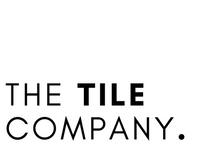
Understanding Tiles: The Basics
Not all tiles are made the same, they are made of various materials with different finishes and uses. It can be overwhelming trying to find the right quality tile for your project, here at The Tile Company we want to make it easy for you.
Below is a handy guide of common tile terminology and the things to be mindful of when making your online tile selection.
Body Types
Creating tiles is very similar to baking a cake. Different mixes produce a variation of designs and types. Like a cake, tiles are made by mixing different natural materials and then ‘frosted’ by printing and glazes. They are then fired in an extremely hot oven called a kiln and come out as the tiles you see in our online store.
Understanding a tiles composition can help you select the perfect tile for your budget and application.
Here are the common types of tile materials:
Ceramic Tiles
- Usually made from natural clay and sometimes sand mixed with water
- Best suited to residential and recreational spaces
- Available glazed and unglazed
There are two types of ceramic tiles:
- Glazed Ceramic: A thin coat of liquefied glass (glaze) is applied over the surface making them moisture and stain-resistant.
- Unglazed Ceramic: Have no glaze are more porous.
Pro: Widely available, relatively affordable, easy to cut, easy to maintain, easy to repair.
Con: Prone to cracking in extremely cold weather.
Porcelain Tiles
- Made from special clay, fine sand and feldspar
- Fired and pressed at higher rates than ceramic tiles making them more durable.
- Porcelain tiles suit almost all applications.
Pro: More durable than ceramic tiles. Easier to maintain. Can be used in more spaces such as exteriors and high traffic areas
Con: Can be a bit more pricy and sometimes harder to cut
Here are 5 types of Porcelain tiles:
- Unglazed Porcelain: Made from powdered coloured clay that is compressed tightly.
- Glazed Porcelain: Has an additional firing process where a thin coat of liquefied glass (glaze) is applied.
- Polished Porcelain: The Porcelain surface is polished using a diamond disk.
- Double Charged Porcelain: Two layers of clay are compressed together making a generally plain design tile with earthy colouring.
- Colour Bodied Porcelain: The colour of the pattern goes from the surface to the base.
Tile Finishes
- Matt Tiles: A non-shiny glaze that has a flat non-reflective finish
- Satin Tiles: A soft low sheen appearance achieved from light polishing.
- Gloss Tiles: A shiny glaze that has a reflective finish
- Lappato Tiles: A shiny texture that gives a semi-gloss look
- Structured Tiles: A tile that has rough random texture or protruding geometric shapes
- Textured Tiles: A tile that has a smooth-rough textured feeling.
- Honed Tiles- A smooth matt tile that has had a soft polishing
Tile Edges
This is the type of edge the tile has, there are three common types:
- Pressed Edge or Cushion Edge: A slightly rounded edge formed by the tile mould or pressing.
- Rectified Edge: A perfectly straight edge that has been precisely machined.
- Handmade Edges: An organic edge formed by handcrafting processes.
Variation
With advances in digital tile printing there are now a wide range in patterns and designs.
This variation scale helps to indicate the level of variation you can expect within the tile you select.
|
|
Generally uniform in appearance with minimal difference among tiles from the same batch. |
|
V2 |
Slight variation with similar colours and distinguishable differences in texture and/or pattern. |
|
V3 |
Moderate variation with the colours in a single tile being significantly varied. |
|
V4 |
Substantial Variation producing tiles that differ in colour randomly from one tile to the next. |
Wear Rating
A wear rating determines where a tile can be used they are important to note when buying your tiles online.
Wear 0- Wall tile.
These cannot be used on the floor as they are too delicate for foot traffic
Wear 1- Light foot traffic.
Best suited to areas where you will be bare foot with no abrasive dirt. Use in places such as residential bedrooms and residential ensuites that don’t have direct access from the outdoors.
Wear 2- Regular foot traffic.
Can be walked on with bare feet and soft soled shoes. Use in places such as residential bathrooms. These are not suited to kitchens or areas that lead outdoors.
Wear 3- Medium foot traffic
These tiles withstand usual foot traffic of normal shoes and minimal dirt deposits. Use in places such as residential kitchens, living rooms, corridors and balconies
Wear 4- Heavy foot traffic
Perfect for regular pedestrian traffic and some dirt deposits. Great for non-residential spaces such as commercial kitchens, hotels and exhibition halls
Wear 5 – Extra Heavy traffic
The final wear rating category, these tiles can last a very long time with a lot of pedestrian traffic. They are perfect for malls, airports, public walkways and industrial spaces.
If you still have questions about the basics of tiles book a free online design consultation today with one of our expert designers who can help guide your online tile shopping here at The Tile Company.




